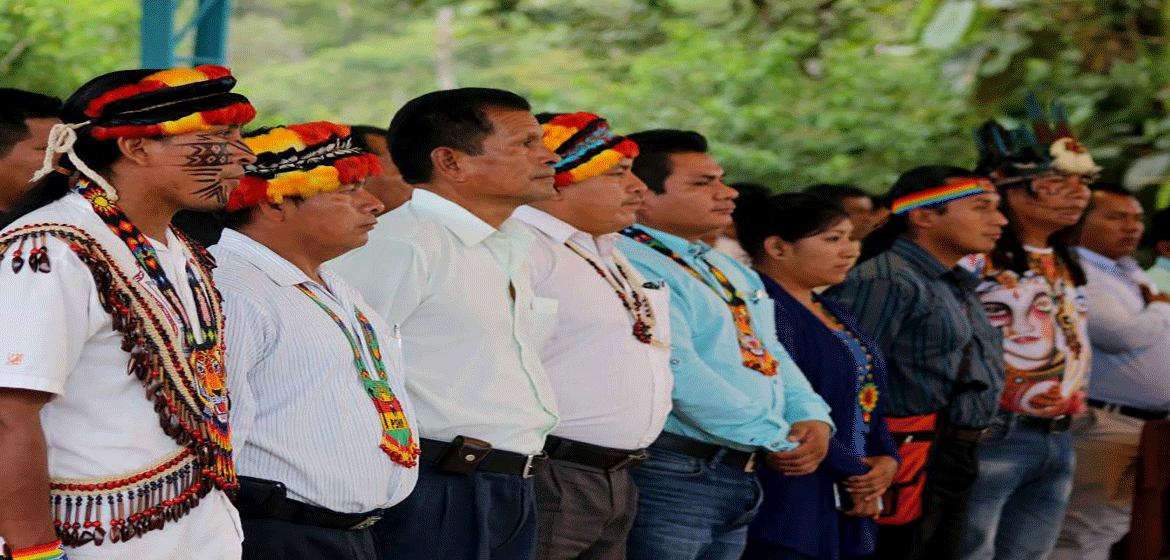The indigenous peoples of the Ecuadorian Amazon protect more than 4 million hectares of forest, where around 834.2 million tons of carbon are stored.
For this reason, Confeniae proposes to measure and assess the climate contribution of indigenous territories in climate projects and processes.
Servindi, January 20, 2021.- The (Confeniae) presented its proposal for equitable compensation for reducing emissions from the territories of indigenous nationalities.
In this context, he questioned the "state incoherence and injustice and inequity towards our peoples in climate policies and financing."
This situation - according to the organization - occurs despite the fact that they protect more than four million hectares, which represents 60 percent of the Amazon in which 834.2 million tons of carbon is stored.
Given this, the Confeniae demands the installation of a decision-making space made up of the and representatives Program (UNDP) to explain their demands.
Likewise, it seeks to establish the Confeniae Executing Unit "and other mechanisms for direct operational management of the Amazonian nationalities, of climate financing, to guarantee effectiveness, efficiency and sustainability."

Document presented by Confeniae with proposals to measure and assess the climate contribution of indigenous territories in climate projects and processes
Indigenous climate ambition
La Confeniae highlights the holistic vision that indigenous peoples inherited from their ancestors. It is about seeing the Amazon as an integral space where there is reciprocity between nature and those who inhabit it.
In this sense, he urges the Ecuadorian State to correct the double discourse where, on the one hand, the "defense of nature" stands out, while criminalizing and persecuting the true defenders of the Mother Jungle, at the local and national level.
In addition, it indicates that they cover 60 percent of the Ecuadorian Amazon and "accumulate billions of tons of carbon", with which they "greatly" exceed the goal of Ecuador's (NDC) to reduce carbon dioxide gases. greenhouse effect by 2025.
For this reason, they warn that without the state and social support of the collective rights and territorial management of the Amazonian indigenous peoples and nationalities, Ecuador will not be able to fulfill its international commitments on climate crisis, biodiversity and sustainable development.
It also proposes to “initiate the post-extractivist national transition towards the Full Life or Good Living bioeconomy , with added value from the standing forest and renewable energies without dependence on fossil energy; including overcoming extractivism and exploitation by third parties of wisdom ”.
Full life
Confeniae proposes a national debate on the vision of the future of the Amazon and avoid prioritizing "green agribusiness" when there is no certainty about their risks.
The debate - according to the organization - should also apply to sector policies and investments that include the components of the and , both channeled by UNDP.
On the other hand, it proposes including territorial security and self-government of indigenous peoples as "enabling climatic conditions" to reduce emissions.
"That self-government includes the 'environmental and territorial governance' indicated but not applied, in Socio Bosque, Pro Amazonía, REM and Payment for Results," he warns.
Equitable remuneration
Confenaie proposes to measure and value the climatic contribution of indigenous territories by reducing emissions, carbon absorption and storage, evaporation and transpiration of the forest, the latter known as “flying rivers”.
They also contribute by "stopping the displacement of deforestation agents, the role of natural firebreaks in the face of forest fires, water regulation, connectivity and reproduction of biodiversity, cultural uses and the basis of identity and spirituality."
According to the organization, climate projects and processes should include in a comprehensive manner "the measurement, quantification and valuation of ecosystem and climate functions" and their corresponding "equitable and culturally appropriate climate retribution".
"Equitable remuneration and with cultural adaptation, through the Life Plans of indigenous peoples and nationalities prepared with autonomy, without intermediaries or substitutions," he says.
Emission reduction
In order to reduce emissions, Confeniae proposes prioritizing the territorial security and natural assets of indigenous peoples through the “constitution and reorganization of pending territories” that guarantee the rights over ancestral territories and collective traditions as peoples.
It also proposes stopping the drivers of deforestation, degradation and pollution by suspending authorizations for monoculture plantations such as oil palm.
According to the document, priority should be given, among others, to “economic initiatives of communities with added value from the standing forest, referring to extracts or meals of medicinal, nutritional, cosmetic plants and fruits, fishery products, community tourism and indigenous art”.
Access the complete document at the following link:
Source:
Related to SDG 13: Climate action



